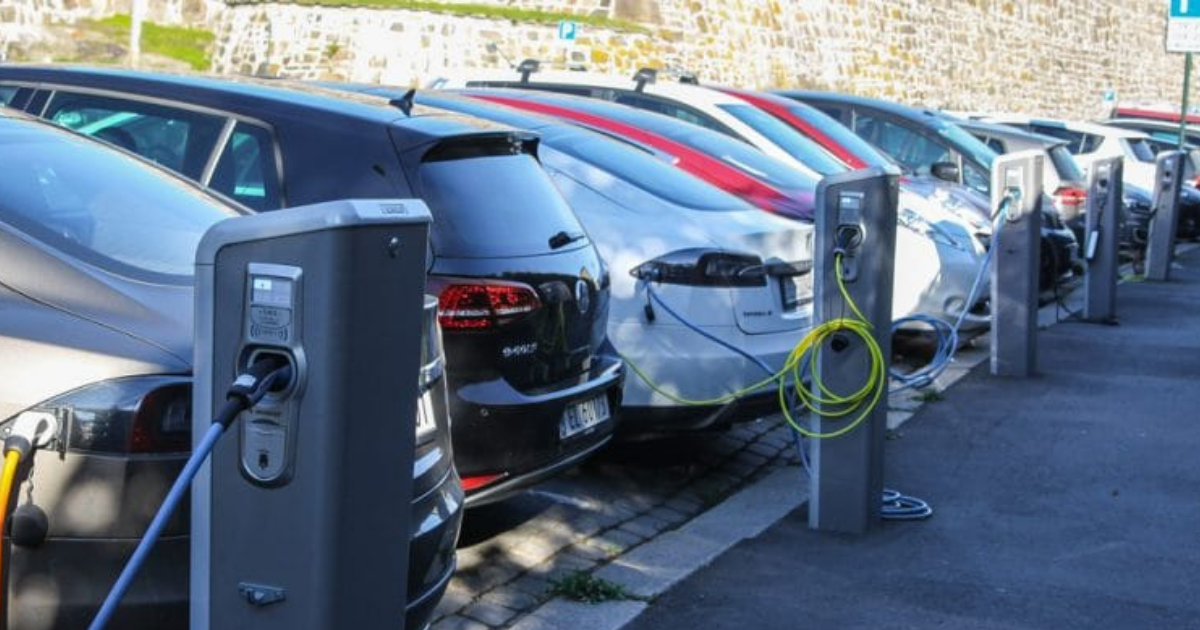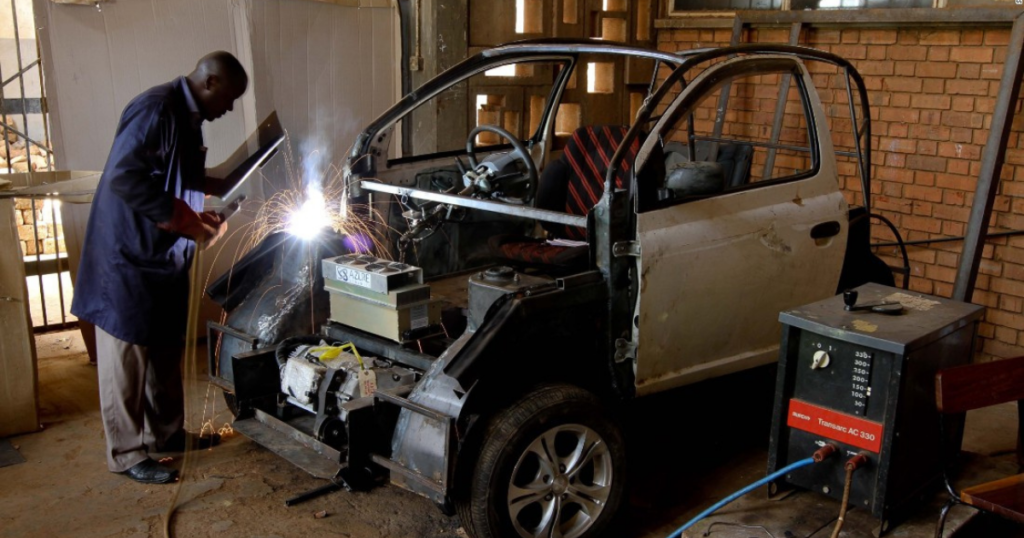Electric Vehicles: When will Africa be ripe for mass adoption?

Africa is home to over 1.3 billion people, and about 72 million vehicles ply the roads across the continent. Most of these vehicles use Internal Combustion Engine (ICE), powered by fossil fuels—petroleum and natural gas, which pollute the air and are dangerous to humans and the environment. Also, this fuel is increasingly expensive, which makes governments of some African countries subsidize the product to cushion the effect on the populace.
Apart from the risk of fossil fuel, poor fuel quality and the sale of second-hand and worn-out fossil fuel-powered cars on the streets further increase transport emissions.
Africa has been slow, if not conspicuously absent, as the rest of the world embraces the electric vehicle option. This apparent lack of interest may be traceable to some peculiar challenges bedeviling the continent, such as lack of political will among the leaders in the continent, unreliable electricity supply, low vehicle affordability, and the dominance of used vehicles.
Electricity reliability remains a massive issue in the continent. For instance, a 2019 survey across 34 African countries found that fewer than half of those connected to the grid have reliable electricity.
Also, there is the issue of affordability due to comparatively low household incomes, low availability of asset finance at affordable rates, and higher price points for EVs. This situation forced the populace to purchase used vehicles, except for South Africa, where used-vehicle imports are banned.
In most African countries, about 85 percent of all four-wheel vehicle sales are used vehicles driven by affordability challenges and weak regulation. A 2020 United Nations Environment Programme (UNEP) report states that 40 out of 49 sub-Saharan African countries have vulnerable or fragile used-vehicle laws.
According to reports, global adoption of electric vehicles has increased by more than six-fold since 2015, with over 11 million registered electric vehicles on the road in 2021, including cars, buses, vans, and lorries. By the end of the decade, this figure is expected to rise to 145 million. In addition, there are now 370 distinct electric vehicle models on the market, with 90% of global electric vehicles sales concentrated in China, Europe, and the United States.
EV sales volume has also been groundbreaking, with a 41 percent increase in 2020, despite a 16 percent global reduction in total automobile sales due to the pandemic.
Africa continues to lag in the transition and acceptance of electric vehicles compared to Europe, which overtook China as the center of the global electric vehicle market for the first time. The region witnessed electric vehicle sales of 3 million, with registration doubling to 4.1 million. China has been the world’s largest EV market since 2015. According to the Chinese ministry of public security, there are about five million EVs in China, accounting for more than half of the world’s total.
According to the International Energy Agency (IEA), the enormous disparity in EV adoption between areas is due to the number of hurdles that EV growth faces.
In most African nations, electric cars are still uncommon. With a one-in-a-million chance of discovering one, even South Africa, Africa’s largest EV market, can only present 1,000 EVs out of more than 12 million cars.
Even fewer electric cars are in use in most other African nations, particularly in West Africa, because second-hand automobiles are the most popular vehicles; according to a report, Africa receives 40% of worldwide used vehicle exports.

Electric Vehicle in Production
However, with deliberate governmental policies, especially in the wake of the much-discussed climate action and pledge to SDGs net-zero greenhouse gas emissions, the automotive markets can embrace more climate-friendly options like EVs – by making deliberate investments in electricity and charging infrastructure, innovating local production and supply chains, financing assets, assemblers, and infrastructure as well as considering regulatory mechanisms similar to what Cape Verde is doing. Last year, the island country announced that it’s phasing out the sale of internal combustion engine vehicles by 2035, setting emissions standards or fiscal incentives such as tax exemptions for EV sales or subsidies for charging infrastructure.
Governments, development partners, and the organized private sector across the continent can work together to provide the enabling environment required for EVs to scale, providing stable electricity supply and charging infrastructure.
Considering the level of poverty in the region, with 34% of households with a consumption level below the 1.9$/day, it is increasingly difficult for majority of the people to afford EVs without an auto loan facility, hence the need for the government and the financial institutions to provide soft and accessible loans for Africans who desires to own electric vehicle.
EV companies could consider investing in homegrown-product innovation to design EVs for local needs and conditions. Local vehicle assemblers can also support national and regional supply chains by manufacturing some parts locally.
Improvements in public infrastructures, such as constructing more motorable highways, steady electricity, public E-chargers/charging stations, and incentives for individuals eager to convert their automobiles to electric vehicles, are all possible.
Despite the numerous obstacles to EV adoption in Africa, a small number of startups and corporations in several nations are developing electric cars to encourage adoption on the continent.
With the construction of electric-vehicle fleets of light carriers and motorcycles—vehicles perfectly adapted for the continent’s challenging roads—these firms are finally bringing the electric vehicle revolution to the streets of Africa.
Kenya-based ARC Ride, for example, has developed electric two- and three-wheelers for UberEats delivery in Nairobi. Ampersand, a Rwandan start-up, is launching an electric motorbike taxi service in Kigali, with aspirations to extend to other East African nations.
Kiira Motors’ domestically built electric buses have begun transporting people in Kampala, Uganda. Finally, JET Motor Company has teamed with GIG Logistics in Nigeria to deliver its EVs for transportation and logistics services.
Many African countries mainly rely on road transit for both people and logistic movement (90 percent), resulting in a high need for premium motor spirits (PMS).
Nigeria’s government has ambitious goals to adopt electric vehicles, and the Presidency has announced intentions to provide loans to Nigerians to purchase new electric cars. This announcement is a positive step, given the adverse reaction to a bill presented by a senator in 2019 to phase out fossil-fuel vehicles and make electric vehicles ubiquitous by 2035.
According to the Nigerian government’s parastatal (Niger Delta Development Commission), 50 percent of automobiles produced and assembled in the country will be electric in the next ten years. To achieve this aim, the federal government has commissioned the first solar-powered Electric Vehicle (EV) charging station by the National Automotive Design and Development Council (NADDC) at the Usmanu Danfodio University, Sokoto (UDUS). The commissioning came a few months after unveiling the first locally assembled EV in Nigeria, the Hyundai KONA Electric.
Tesla constructed two Supercharging stations in Morocco last year, the first in Africa. When you consider that there are 1,293 Supercharger stations in the United States, the impact of this action is minor. However, there are currently insufficient Tesla automobiles on the continent to justify installing that many charging points.
Mass adoption of EVs in Africa might look challenging but surmountable. There is a need for timely intervention to not leave the continent behind as the rest of the world transitions. Failure to create an enabling environment for electric transport could make the region a dumping ground for old ICE vehicles, setting back the continent’s carbon-emission-reduction goals.
